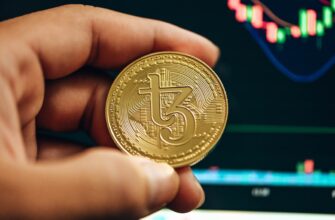- The Early Days: Cryptocurrency’s Quiet Entry into India (2009-2012)
- Regulatory Warnings and Initial Skepticism (2013-2017)
- The Boom and the Ban: RBI’s Crackdown (2018-2020)
- The Supreme Court Verdict and Renewed Hope (March 2020)
- The Current Landscape: Regulation and Adoption (2021-Present)
- The Future of Cryptocurrency in India
- Frequently Asked Questions
The Early Days: Cryptocurrency’s Quiet Entry into India (2009-2012)
India’s cryptocurrency journey began subtly alongside Bitcoin’s global emergence. Between 2009-2012, tech enthusiasts and cryptography groups quietly explored this novel concept. Key developments included:
- India’s first Bitcoin transaction occurred in 2010 when a Hyderabad engineer mined coins on his home computer
- Early adopters used international exchanges like Mt. Gox due to absence of local platforms
- Pioneering communities formed on platforms like Bitcointalk.org to discuss blockchain technology
Regulatory Warnings and Initial Skepticism (2013-2017)
As cryptocurrency gained visibility, Indian authorities responded cautiously. The Reserve Bank of India (RBI) issued its first advisory in 2013, warning users about potential financial risks. This period saw:
- RBI’s December 2013 circular highlighting virtual currencies’ security and legal concerns
- Establishment of domestic exchanges like ZebPay and Unocoin (2014-2016)
- Income Tax Department’s first survey of major exchanges in December 2016
- Government committee formation in April 2017 to study cryptocurrency frameworks
The Boom and the Ban: RBI’s Crackdown (2018-2020)
2018 marked a pivotal year when RBI prohibited banks from servicing crypto businesses. Despite this:
- Cryptocurrency trading volumes surged 500% during 2017-2018 bull run
- RBI’s April 2018 circular banned financial institutions from crypto dealings
- Major exchanges shifted to peer-to-peer (P2P) models to survive
- Finance Minister’s 2018 budget speech declared cryptocurrency isn’t legal tender
The Supreme Court Verdict and Renewed Hope (March 2020)
In a landmark judgment, India’s Supreme Court overturned RBI’s banking ban on March 4, 2020. The court ruled the ban disproportionate, citing:
- Absence of proven harm to regulated entities
- Violation of constitutional freedom to trade
- Lack of RBI jurisdiction over non-fiat currencies
This triggered explosive growth, with Indian crypto exchanges reporting 500% user increase within months.
The Current Landscape: Regulation and Adoption (2021-Present)
Post-2020, India’s crypto ecosystem matured amid regulatory uncertainty:
- 30% crypto tax + 1% TDS implemented in 2022 Union Budget
- India ranked 2nd globally in 2022 Chainalysis crypto adoption index
- Over 15 million active crypto investors as of 2023 (NASSCOM data)
- G20 presidency pushing for global crypto regulatory framework
The Future of Cryptocurrency in India
Potential developments shaping India’s crypto evolution include:
- Possible licensing framework for Virtual Digital Assets (VDAs)
- Central Bank Digital Currency (CBDC) pilot expansion
- Blockchain integration in public infrastructure projects
- Growing institutional investment through regulated channels
Frequently Asked Questions
Q: When did cryptocurrency start in India?
A: Initial exploration began around 2010-2011, with the first Bitcoin transaction occurring in 2010.
Q: Is cryptocurrency legal in India today?
A: Cryptocurrencies aren’t legal tender but trading is legal with tax compliance following the 2020 Supreme Court verdict.
Q: What was the impact of RBI’s 2018 ban?
A: It forced exchanges to adopt P2P models and caused temporary trading declines until the Supreme Court overturned it in 2020.
Q: How are cryptocurrencies taxed in India?
A: Since 2022, 30% tax on profits + 1% TDS on transactions above ₹10,000, with no loss offset provisions.
Q: Which crypto exchanges operate in India?
A: Major platforms include CoinDCX, WazirX, ZebPay, and international exchanges with INR support like Binance.








